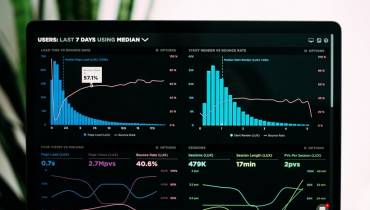5 Big Trends Shaping the E-commerce Sector

Ecommerce has already completely changed the way people purchase goods. Despite already vastly shifting shopping habits, ecommerce is just getting started.
Here are five big trends shaping ecommerce.
1. Continued Ecommerce Sales Growth
There’s no denying that ecommerce is on the ascent. It’s hard to beat the ease and convenience of purchasing goods online and having them delivered to your door. Due to this, ecommerce has seen some strong growth over recent years.
U.S. ecommerce sales, for example, will cross $1 trillion for the first time in 2022. Reaching this milestone was not expected until 2024 prior to the pandemic. Worldwide, ecommerce sales are expected to reach $5 trillion in 2022 and $6 trillion by 2024.
Despite already experiencing such sustained growth, ecommerce still only accounts for about 19.6% of retail as a whole as of 2020. This means there’s still a ton of room for this sector to continue capturing market share. It’s going to be interesting to see how much ecommerce keeps growing into the future.
2. Customers Demanding More from Brands
There’s a sort of social contract that exists between brands and consumers. People who buy goods essentially use their dollars as a voting mechanism. Those companies and brands that receive the most business are getting a stamp of approval from the public.
But what determines which brands get that stamp of approval? Think about your own purchasing preferences. Of course, you want to purchase items that you prefer most.
Whether we’re talking about shoes, clothes, food, a car, or anything else, people typically want to get the goods that speak to them. This preference comes down to a combination of personal taste, quality, and branding.
Cost has also traditionally been a huge determiner for customers. If there’s not a huge difference between two items, you’re probably going to want the less expensive one.
However, sourcing and ethical concerns are becoming more and more prevalent as well. As consumers become more educated about how their products are made and shipped, they’re setting higher expectations for brands.
Ethical sourcing and sustainability are going to keep becoming more important to ecommerce shoppers going forward.
3. Artificial Intelligence Is Gaining Importance
It’s tough to find an industry that’s not going to be affected by artificial intelligence in some way. Ecommerce is certainly no exception to this rule.
There are a few ways AI is set to play a big part of online shopping — particularly in light of the fact there’s an explosion of data in ecommerce from digital shopping, connected supply chains, better Internet of Things (IoT) and more sources.
First, let’s look at things from the customer’s perspective. AI is situated to make shopping online easier and better for consumers. Chatbots are getting better all the time. They’re already at a point where they can handle many interactions without human assistance.
Greater personalization is another way AI is making headway in ecommerce. Customers want a personalized shopping experience. Artificial intelligence is able to power better data-driven recommendations for products than what has been previously possible.
There are also some big ways AI is making a splash on the backend of ecommerce. AI is already playing a huge role in the future of ecommerce analytics. ThoughtSpot is one analytics provider integrating AI into its data analytics platform — an AI-driven engine that uses advanced algorithms to automatically mine insights buried deep within data.
Thanks to the infusion of AI into analytics tools, ecommerce retailers can capture more — and more relevant — insights in far less time. These insights drive more informed, timely decision making which can in turn drive business outcomes.
Long story short: AI is poised to generate massive value across all points of online retail, from inventory to shipping, production, marketing, sales, customer experience and more.
4. Mobile and Voice Will Keep Gaining Dominance
When you think of shopping, you might automatically associate this action with a store, despite the rising popularity of ecommerce.
In the same way, people often still group ecommerce with shopping on a computer. The reality, however, is that mobile ecommerce is quickly becoming an equally popular mode.
Business Insider studies suggest m-commerce could grow to 44% of all ecommerce by 2024. There’s no denying the mounting trend of shopping on mobile devices.

5. Subscriptions Are Finding Their Groove
Subscription ecommerce has been around for a little while now. Most people have at least heard of subscription box services, such as Birchbox or Dollar Shave Club. But things have now evolved beyond this point for subscription ecommerce.
The big dog in ecommerce, Amazon, now offers its customers discounts for purchasing items on a recurring basis. This is a win-win for brands and consumers alike, as the consistent cash flow allows brands to offer discounted rates on goods.
It’s more than likely this type of subscription ecommerce is going to continue growing in relevance into the future.
Conclusion
Ecommerce is here to stay. But this way of shopping is still in its early years. These trends are going to shape ecommerce for years to come.




















